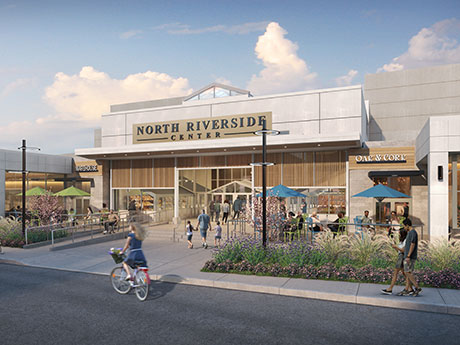By Brad Belden, Colliers
Now that the final numbers are in for 2023, we can undoubtedly say that the worst of COVID is behind us in the world of retail leasing. 2023 saw increased rental rates, longer-term deals and record low vacancy rates across the nation.
It’s great news; retail is not dead and it could even be argued that it’s never been busier. But it’s also… different. On average, leases are shrinking and how space is used is changing. And demand, coupled with customers’ increased desire to visit evolving concepts, is making for another busy year ahead for this segment of the industry.

So far, 2024 is off to a great start and this year’s trends are already taking form. On the consumer side, a significant shift back to bricks-and-mortar retail is already underway as consumers seek to connect with retailers again and make shopping an “experience.”
On the retailer side, two factors are driving change: the emergence of AI, which is allowing many retailers to analyze and customize the customer experience while improving operations behind the scenes to boost sales (regardless of the tenant type, retail tenants in Chicago and across the U.S. have one thing in common: they are all actively finding ways/trying to engage with shoppers); and the redesign and reuse of existing structures and spaces to fit new needs brought on by the surge in demand by new and different types of retailers (the business of retail is at peak creativity).
In Chicago, a quick look at the data illustrates the market’s trajectory: net absorption totaled 1.7 million square feet in 2023, the highest level since 2005. Availability as of second-quarter 2023 was at 6.8 percent — also the lowest level since 2005. Asking rent growth remains positive and is expected to continue.
Fueling the statistics is demand for small shop space, which has never been greater and is driven by the customer’s preference for a convenient and streamlined experience. The revitalization of some neighborhoods has spurred the debut of many independent shops such as boutiques, trendy eateries and artisanal shops that cater to younger residents in these gentrifying areas.
In addition, demand is up considerably among certain segments of the market. Driven by a surge in diners, Chicago restaurant dining increased by 7.8 percent the first seven months of 2023, well above the national average of 1.1 percent and sixth among the largest U.S. restaurant markets.
Service-oriented tenants such as salons, massage spas, retail offices, doggy day care and training, and infusion clinics are also increasing. Personal training/fitness, including the martial arts, are also very popular right now. Stores carrying local products, handmade jewelry and specialty foods, as well as a considerable amount of “experiential” pop-ups in Chicago, are on the rise too.
Food halls continue to be popular especially in the area’s hottest submarket, Fulton Market. Time Out Market, “a dining and culture experience curated and vetted by the editors of Time Out,” is an excellent example of a successful new retailer entering the market.
Further, new uses, which were unheard of years ago, are also dominating right now. Concepts such as sauna tenants, cold plunge tenants and other never-before-seen business models are now a constant in today’s marketplace.
Interestingly, franchising is also becoming a popular avenue with a fair amount of middle-aged people withdrawing their 401Ks and savings to invest in franchises instead of playing the market and waiting out retirement. For some, this is a way to put their money to work for retirement or even to grow wealth and jobs for young adult children and grandchildren after them. It can be a risky model despite its recent popularity.
All and all, we are seeing an increase in activity across the retail spectrum and expect things to continue in the same direction over the next few years. Time will tell if this new version of retail continues to evolve. Which of these strategies will work? Which ones won’t? What is here to stay? What we do know now is that Chicago is experiencing a renaissance — it’s busy — and we can’t wait to see where it goes.
Brad Belden is a senior vice president with Colliers. This article originally appeared in the March 2024 issue of Heartland Real Estate Business magazine.


